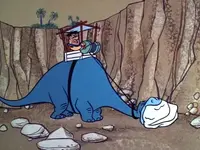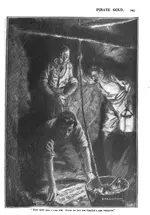gazzahk
Bronze Member
- Joined
- Nov 14, 2015
- Messages
- 1,720
- Reaction score
- 2,584
- Golden Thread
- 0
- Primary Interest:
- All Treasure Hunting
- #1
Thread Owner
This topic came up in another thread and I did some research. This excellent well documented article seems to support that the inscription on the stone that was translated was fake. https://www.oakislandcompendium.ca/...lost-90-foot-stone-part-2-in-a-special-series
Time line: Reported found in 1803
First public mention was 60 years later in 1863... That really makes you wonder right there if it ever really existed with clear inscription on it..
By then it was a rock in a chimney
The next reference was 1864
another reference from that time
The first reported translation comes in 1893.. 90 years after the stone has been allegedly found
this was from
By 1909 the next reports all have the engravings worn away
By 1911 there is already people claiming it was a fake
Thus it appears the only people that ever saw something that was capable of transcription found it on a different sized stone and were in the process of trying to raise money for a treasure search..
The evidence seems pretty convincing in my view the transcription was a fake....
Does make you wonder why the Laginas never did some basic research before embarking on their treasure search.... All they did was send there kid to the old shop where it hadn't been seen in over 100 years...
Time line: Reported found in 1803
80 feet was a stone cut square, two feet long and about a foot thick, with several characters on it."
First public mention was 60 years later in 1863... That really makes you wonder right there if it ever really existed with clear inscription on it..
By then it was a rock in a chimney
“…and the eighty feet mark was a stone about two feet long, cut square, which is yet to be seen in the chimney of an old house near the pit.”
The next reference was 1864
This report does not have a 'code' but a few 'rudely cut letters' to bad to decipher.."a flag stone about two feet long and one wide, with a number of rudely cut letters and figures upon it. They were in hopes the inscription would throw some valuable light on their search, but unfortunately they could not decipher it, as it was either too badly cut or did not appear to be in their own vernacular."
another reference from that time
This reference states the letters appear scraped out with a blunt instrument... Not the carefully carved inscription that appears later...At the time I saw the stone I noticed that there were some rudely cut letters, figures or characters upon it. I cannot recollect which, but they appear as if they had been scraped out by a blunt instrument, rather than cut with a sharp one.
The first reported translation comes in 1893.. 90 years after the stone has been allegedly found
this was from
A Prospectus is published in Boston to attract investors for a new attempt on recovering the treasure.
The size of the stone has now changed.. It has grown by 1 foot.. This report now has clear marked characters cut..“The 90 Foot mark was a flat stone, about three feet long and 16 inches wide. On it marks or characters had been cut. Afterwards it was placed in the jamb of a fireplace that Mr. Smith was building in his house, and while there was viewed by thousands of people. Many years afterwards, it was taken out of the chimney and taken to Halifax to have, if possible, the characters deciphered. On expert gave his reading of the inscriptions as follows: “Ten feet below are two million pounds buried.” We give this statement for what it is worth, but by no means claim that this is the correct interpretation. Apart from this however, the fact remains that the history and description of the stone as given above has never been disputed.”
By 1909 the next reports all have the engravings worn away
By 1911 there is already people claiming it was a fake
“I have seen the rock found in the Money Pit, which is now in Creighton’s bookbindery in Halifax.” —Page 20
“While in Halifax we examined the stone found in the Money Pit, the characters on which were supposed to mean: “Ten feet below two million pounds lie buried.” The rock is of a basalt type hard and fine-grained.” —Page 20
“Sixth — There never were any characters on the rock found in the Money Pit. Because: (a) The rock, being hard, they could not wear off. (b) There are a few scratches, etc., made by Creighton’s employees, as they acknowledged, but there is not, and never was, a system of characters carved on the stone.” —Page 20
Thus it appears the only people that ever saw something that was capable of transcription found it on a different sized stone and were in the process of trying to raise money for a treasure search..
The evidence seems pretty convincing in my view the transcription was a fake....
Does make you wonder why the Laginas never did some basic research before embarking on their treasure search.... All they did was send there kid to the old shop where it hadn't been seen in over 100 years...
Last edited:











